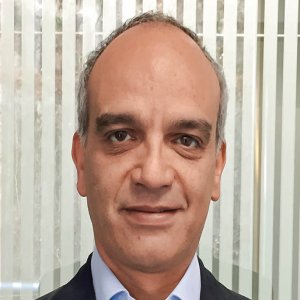National Data Repository Amidst Round One

STORY INLINE POST
Q: How has the process of the data transfer developed, and how is this helping the progress of the Energy Reform?
A: One of the objectives of the Energy Reform is to boost the exploration activities in the country, which highlights the need for more data. Since we started to operate the bidding rounds, we realized that in order to be successful in the implementation of the Energy Reform we had to create an efficient information industry in Mexico. We have three instruments that will enable us to achieve this: data packs for bidding rounds, a licensing system for access to data, and data generation through a multi-client system.
Q: What feedback did you receive from companies regarding the data available for R1-L01, and how did this impact the subsequent phases?
A: We received considerable suggestions on all aspects of process oversights, ranging from data and technical aspects to contracts. During R1-L01, we received great feedback from companies, which was addressed in the future bids.
Someone expressed disappointment due to the fact that the data was cut. The comment expressed concern about the need to connect the wells to the appropriate surveys. Although this was a relatively basic issue, it was something we overlooked. Therefore, we decided to open all the data without cutting or filtering any of it. All the data transferred from Pemex and IMP has to be made available to any interested company, which we continue to work on. This is the reason why we develop the instrument of data access through a license model. Like all governmental activities, however, regulations had to be created. Issuing the regulation that granted access to all the seismic surveys and well data took a considerable amount of time and effort. Nonetheless, we managed to succeed in launching the regulation and obtaining the price of the data. The process entailed creating the data packs, checking the surveys and the variations, working with the Ministry of Finance, and obtaining approval for the price. Finally, we managed to release the licensing system at the end of September, and we created an extremely transparent process, meaning that all data is available to any individual who requires it. The only exception is raw seismic data, since this constitutes a considerable amount of information, so instead it is granted through the ARES regulation.
Q: What would be the impact if companies in Round Two purchase the relevant information from the private sector instead of accessing the Data Room?
A: Companies that have access to the data through the license system will later have no need to buy data packs in order to participate in the future bidding rounds. So far we have data from two different areas of the Gulf of Mexico available in the National Data Repository: deepwater blocks and shallow water blocks in the southeast basins. For deepwater, we have 20 seismic surveys, all of which are final products and migrated acquisitions, as well as the data from 55 wells. For shallow waters, we have 15 seismic 3D surveys, four packs with information on 165 wells, and one pack with 23 seismic 2D surveys. The shallow water wells include Ek, Balam, Sinan, Bolontiku, Ayatsil, Tekel, Pit, and 40 exploration wells around the area. We have given licenses to 13 companies and delivered more than 25 licensed data packs in the first seven months following the issuing of the guidelines in October 2015. In terms of data packs for bidding rounds, we have delivered 143 data packs for the first four tenders of Round One, and hosted 312 visits to the Data Room.
Q: What are the new rules regarding the passing of acquired multi-client seismic on to CNH?
A: The rules have remained basically the same. Companies give CNH the data they collect and we keep it confidential for a 12-year period in the case of new data, and six years in the case of reprocessed existing data. The multi-client system has been extremely successful, as evidenced by the fact that we have authorized 31 different projects: 22 for the acquisition of new data and 11 for reprocessing existing data. This amounts to approximately 350,000km of new 2D seismic data, 111,800km2 of new 3D WAZ seismic data, and the reprocessing of 387,000km2 of existing data.
























